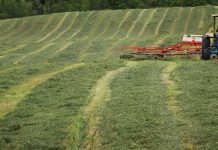Trying to go from breakfast all the way until supper, I’m
reminded, again how much better off I’d be, “grazing” through the day with several light meals and snacks rather than two bigger meals. This especially hits home when I’m rolling a spacious grocery cart along aisles filled with things that look delicious.
Too often, I end up buying junk foods (not on my list) that I can get into the minute I get home (or right away in the car). Before my best intentions for food planning roll away with my shopping cart, take a look with me at the following pointers from Sharon Omahen of the University of Georgia College of Agricultural Sciences.
A grocery list and a little preplanning can lead to a lower food bill and a healthier diet. You’re more likely to include a variety of food and to include fruits and vegetables if you shop from a list. This can lead to your family eating a healthier diet while you save money.
Shopping lists help food shoppers take advantage of weekly store specials. They also help you make wise use of leftovers. Set aside 30 minutes to plan your family’s weekly meals. Once you’ve made the menu list, save it and use it again in three or four weeks.
Vary the foods you eat from month to month, adding seasonal variety. Don’t forget fruits and vegetables. Buy them fresh to eat first; stock up on canned and frozen ones to eat later in the week. Use convenience foods for quick family meals: eggs, canned soup, frozen pizza, spaghetti sauce and pastas are a few examples.
Put fresh fruits and veggies at kids’-eye-level in your refrigerator to encourage
healthy snacking.
When you have your list in hand, head to the super market, preferably without kids, and don’t head out hungry. Your plan can be sabotaged by little helpers who toss in items they like and by shopping on an empty stomach.
Effective planning can reduce the number of times you shop, consequently reducing your food bills and fuel costs. If you’re running several errands, make the grocery store your last stop to keep cold foods cold. Quickly put them away first when you get home.
These sound like tips worth using. I usually use a list, but I don’t always plan menus. I take advantage of the store’s specials, if they are things we use anyway. As to the matter of leftovers, although they generally start out in a prominent place where they’ll be seen and used, our varied containers storing leftovers get shoved to the back of our fridge, soon forgotten, disguised by varying colors and textures of mold.
That should be the next project: Clean out the fridge!












